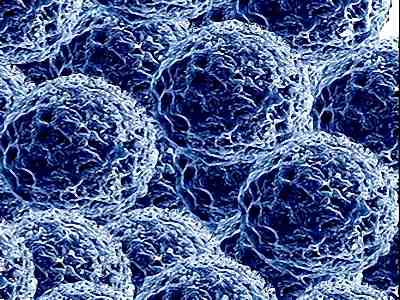Tiny magnet for cancer treatment
Recently, British scientists say tiny pieces of magnets used in anti-cancer gene therapy in mice have created a new step in cancer treatment.
The idea of gene therapy is to replace defective genes, but this method has not been very successful because it is difficult to put genes into human organs correctly.
One option is for viruses to carry genes into the body, but this measure is extremely risky because it can cause an immune system reaction. However, so far British scientists have said they have found a way to solve the problem.
By inserting magnetic nanoparticles into monocytes - a type of white blood cell - and injecting them into the bloodstream, these magnetic nanoparticles can orient themselves around the human body when an external magnet is used. .
Claire Lewis of Sheffield University and colleagues reported in Gene Therapy that more cells will be equipped with anti-cancer genes using this technique. She believes that the new method could also be used to inject therapeutic genes into other diseases such as arthritis or heart disease.

Magnetic nanoparticles (Photo: Reuters)
However, human pathological tests have not yet been performed. Tests to treat tumors have only been carried out on mice. The real goal is to attack the tumors that are deep in the human body that are thought to be the most dangerous.
Gene therapy has been inflated for many years as a treatment for cancer and other diseases in which DNA (deoxyribonucleic acid) plays a central role, but scientists have encountered numerous technical issues and safety levels. In an experiment in 1999, a victim died, and some children had leukemia when applying the treatment.
"We hope that this new method will be safer because we are using a natural mechanism in the human body and the patient's own white blood cells to apply therapy," Lewis said. gene '.
- Cure cancer with ... magnets?
- Application of nanotechnology in cancer treatment
- Prospects for cancer treatment by magnet
- Dangerous cancer - cause and prevention
- Promising breakthrough in research on cancer treatment vaccine
- How is cancer treated?
- New breakthrough in immunotherapy for immunotherapy
- What is metastatic cancer?
- America: Detecting new antibodies that treat 7 types of cancer
- For the first time, implant successful cancer treatment beads in Vietnam
- 10 things to know about cancer chemotherapy
- X-ray interference, a turning point in cancer treatment
 Green tea cleans teeth better than mouthwash?
Green tea cleans teeth better than mouthwash? Death kiss: This is why you should not let anyone kiss your baby's lips
Death kiss: This is why you should not let anyone kiss your baby's lips What is salmonellosis?
What is salmonellosis? Caution should be exercised when using aloe vera through eating and drinking
Caution should be exercised when using aloe vera through eating and drinking